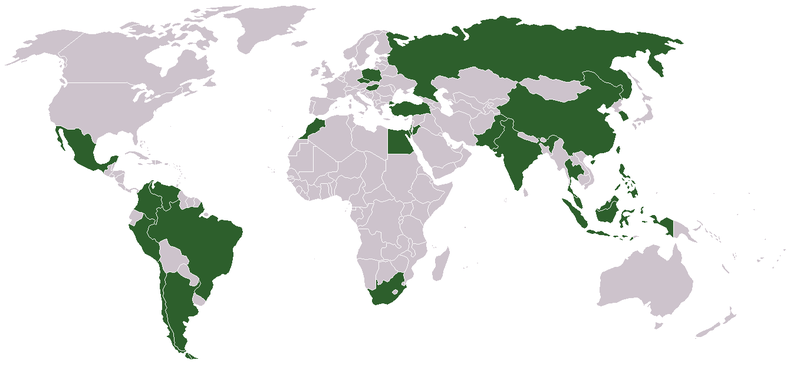The economies of emerging markets will probably improve, say strategists and emerging markets debt portfolio managers at Neuberger Berman, a leading employee-controlled money manager.
Contrary to some market views over the last few weeks, the report – “What’s Next for Emerging Markets Debt?” – says that the financing needs of sovereign and corporate issuers are “relatively moderate, potentially limiting supply, supporting credit fundamentals and spreads, and providing a constructive environment for bonds.”
The authors expect overall emerging market economies to achieve growth of at least 5% in 2013. This follows 5.2% growth in 2012 and 4.8% (annualized) during the first six months of 2013.
Growth of 6% or more is expected for 2014 in emerging markets, the team added.
Rob Drijkoningen, co-head of the Neuberger Berman EMD (emerging markets debt) team, said “We believe that investors have made too much of slowing growth in emerging markets,” Gorky Urquieta, also co-head, added “We expect some economic resurgence, supported by global recovery, particularly in the developed markets, which should partially offset China’s slowdown, even as EM (emerging markets) policymakers gradually scale back monetary support.”
EMD’s recent disappointing performance relative to what has been available in the USA and Europe has improved the relative value of emerging markets debts. The Neuberger Berman team believes that “sovereign credit spreads are attractive compared with historical levels and current expected default rates. Corporate debt should largely mirror sovereign performance, but carry some risk due to recent outperformance over sovereigns.”
High yield issues within the emerging markets corporate sector offer an additional spread cushion in the event of an American Treasury sell-off, the authors added.
Until the end of this year, the authors say their preferred market segment is emerging economies local currency debt.
As inflation and inflation expectations remain under control, real rates have become more positive. The majority of EM banks are mainly neutral to accommodative, thus limiting the risk from US interest rates.
Urquieta said:
“We believe the structural case for EMD remains strong, as investors increasingly recognize the economic significance, improved credit quality, and depth of EM economies and markets. EMD should continue to benefit from the long-term trend of inflows, as fixed income investors add exposure to emerging markets, which are structurally underrepresented in their portfolios.”

